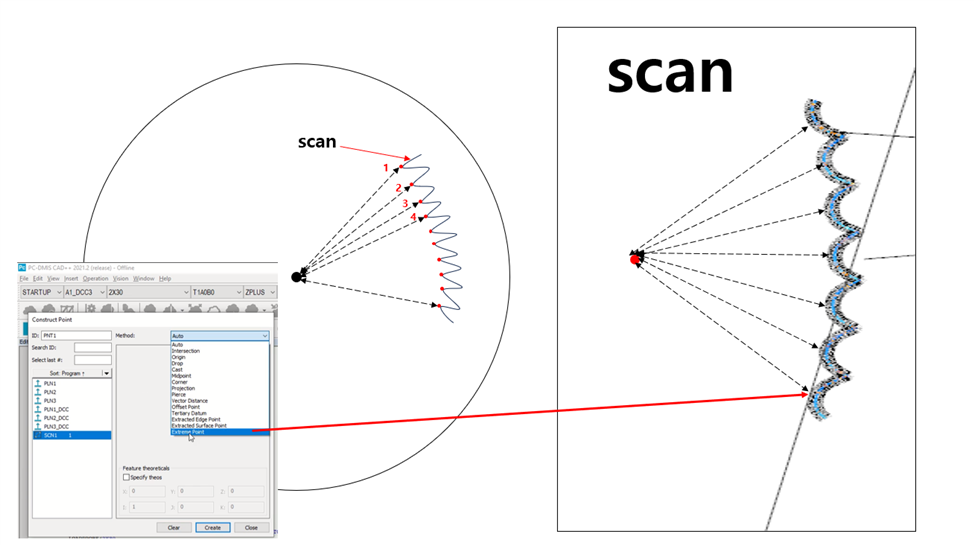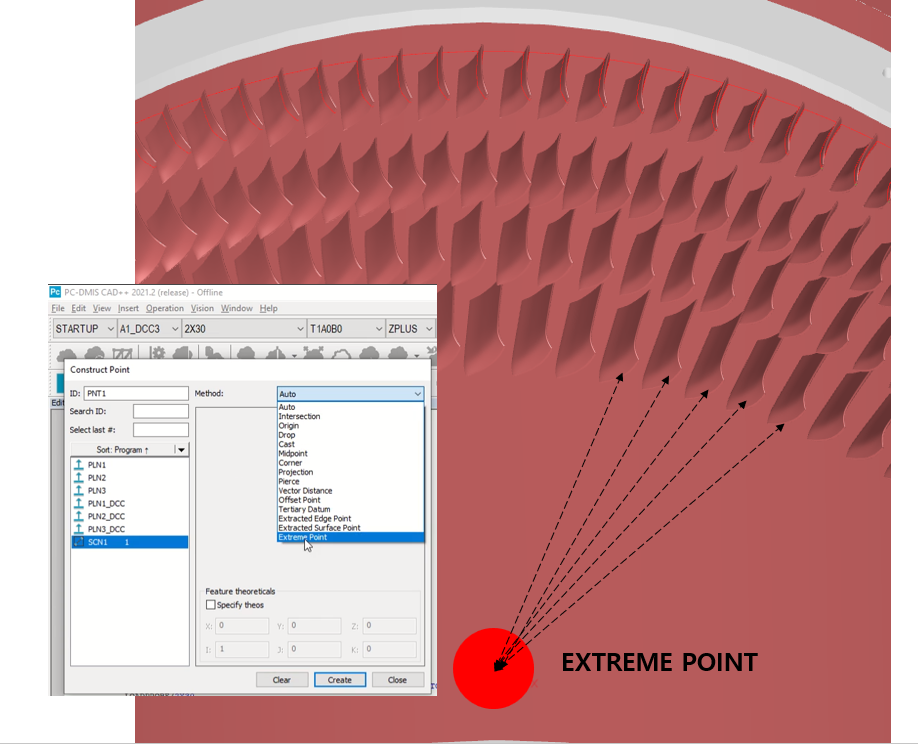When scanned in the shape shown in the figure
I want to know how to find the shortest distance between each point relative to the center.
There will be more than 140 such bends, so the we should be able to find them automatically.
For reference, the program version : PC-DMIS 2019 R2 CAD++
-------------------------------------------------------------------------------------------------------------------------------------------------------------------------
Thank you so much for answering so many of my questions.
The current program version is PC-DMIS 2023.2 CAD++(Finished updating to the latest version)
One of the methods you suggested, the "LOOP" function, take too much time
Is there any way to use the "EXTREME POINT" function in a single scan to output the value I want?


The shortest way to the center(scan) - PC-DMIS User Forum
https://www.pcdmisforum.com/forum/pc-dmis-enterprise-metrology-software/pc-dmis-for-cmms/533106-the-shortest-way-to-the-center-scan
When scanned in the shape shown in the figure I want to know how to find the shortest distance between each point relative to the center. There will be more than 140 such bends, so the we should be able to find them automatically. For reference, the program version : PCDMIS 2019 R2 CAD++
